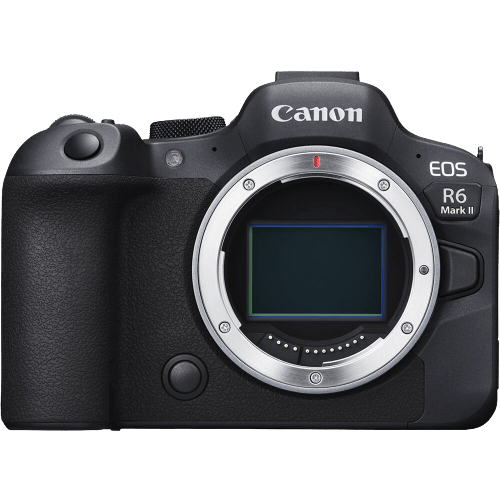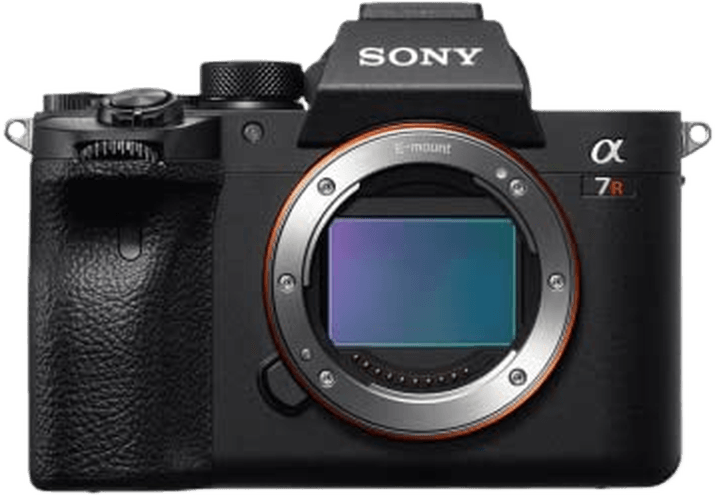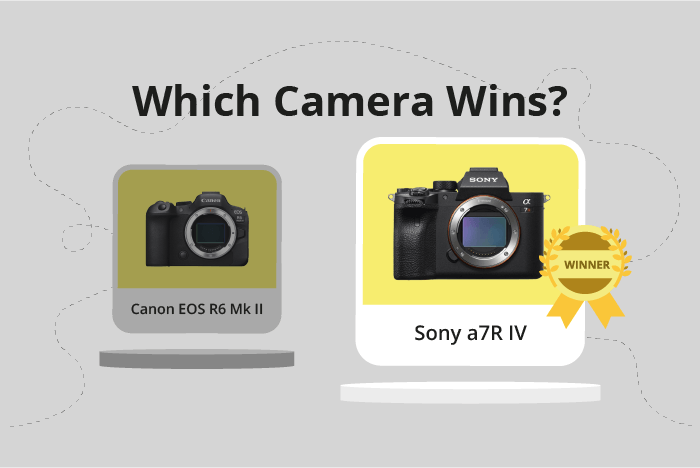Canon EOS R6 Mark II vs Sony a7R IV Comparison
Canon EOS R6 Mark II

Sony a7R IV

The Sony a7R IV edges out the Canon EOS R6 Mark II with a score of 84/100 compared to 78/100. Both cameras are mirrorless and were released in 2019 and 2022, respectively. They share common specifications, such as camera type and similar size, with the Sony a7R IV measuring 129 x 96 x 78mm and the Canon EOS R6 Mark II at 138.4 �� 98.4 �� 88.4mm.
The Sony a7R IV excels with a higher score, which reflects its superior performance and features. On the other hand, the Canon EOS R6 Mark II has a lower launch price of $2499 compared to the Sony a7R IV’s $3500, making it a more affordable option. Additionally, the Canon EOS R6 Mark II is lighter, weighing 588g compared to the Sony a7R IV’s 665g.
Taking these factors into account, the Sony a7R IV is the better camera in terms of performance and features. However, the Canon EOS R6 Mark II offers a more budget-friendly and lightweight option for those seeking a high-quality mirrorless camera.
Canon EOS R6 Mark II vs Sony a7R IV Overview and Optics
The Sony a7R IV wins the optics comparison with a score of 85/100, while the Canon EOS R6 Mark II achieves a score of 83/100. Both cameras share several specifications, including a CMOS sensor, full-frame sensor size, and built-in image stabilization. Additionally, they both have lens mounts specific to their respective brands, with the Canon using an RF mount and the Sony using an FE mount.
The Sony a7R IV outperforms the Canon EOS R6 Mark II in terms of megapixels and sensor quality. With 61.2 megapixels, the Sony a7R IV captures more detail in images than the Canon, which has 24 megapixels. The Sony’s sensor also has a higher DXOMARK score of 99, compared to the Canon’s 91, indicating better overall sensor performance.
In contrast, the Canon EOS R6 Mark II excels in shooting speed, boasting a rate of 40 frames per second (fps), significantly faster than the Sony a7R IV’s 10 fps. This makes the Canon more suitable for capturing fast-moving subjects or action photography.
The Sony a7R IV’s superior megapixel count and sensor quality make it the better option for photographers seeking high-resolution images and optimal sensor performance. On the other hand, the Canon EOS R6 Mark II’s faster shooting speed provides an advantage for those prioritizing action photography. Ultimately, the choice between these two cameras depends on the specific needs and preferences of the photographer.
Canon EOS R6 Mark II vs Sony a7R IV Video Performance
The Canon EOS R6 Mark II outperforms the Sony a7R IV in video capabilities, scoring 83/100 compared to the Sony’s 70/100. Both cameras share some common specifications, such as 4K max video resolution, 3840 x 2160 video dimensions, and built-in time-lapse functionality. However, there are significant differences that give the Canon EOS R6 Mark II an edge over the Sony a7R IV.
The Canon EOS R6 Mark II boasts a higher max video frame rate of 60fps, compared to the Sony a7R IV’s 30fps. This allows for smoother video footage and better slow-motion capabilities, providing more versatility for videographers. The higher frame rate is a key factor contributing to the Canon’s higher video score.
On the other hand, the Sony a7R IV does not offer any distinct advantages over the Canon EOS R6 Mark II in terms of video capabilities. Both cameras have the same video resolution, dimensions, and time-lapse functionality. The lower video score for the Sony a7R IV is primarily due to its lower max video frame rate.
Considering these factors, the Canon EOS R6 Mark II is the better choice for videographers who prioritize smooth, high-quality footage and slow-motion capabilities. The Sony a7R IV, while still offering excellent video features, falls short in comparison due to its lower max video frame rate. Therefore, the higher video score of the Canon EOS R6 Mark II reflects its superior video performance and makes it a more appealing option for those focused on video capabilities.
Canon EOS R6 Mark II vs Sony a7R IV Features and Benefits
The Sony a7R IV outperforms the Canon EOS R6 Mark II in features with a score of 83/100 compared to the Canon’s 72/100. Both cameras share several specifications, such as a 3-inch touchscreen, flip screen, WIFI, and Bluetooth connectivity.
The Sony a7R IV has a higher feature score primarily because it offers a higher screen resolution of 1,440,000 dots, compared to the Canon EOS R6 Mark II’s 1,620,000 dots. This difference results in a sharper and more detailed display on the Sony a7R IV, providing a better user experience when previewing images and navigating menus.
However, the Canon EOS R6 Mark II does have an advantage over the Sony a7R IV in terms of GPS functionality. The Canon camera includes a built-in GPS, allowing users to geotag their images, which can be useful for travel photography and location-based projects. The Sony a7R IV lacks this feature.
Taking these points into consideration, the Sony a7R IV is the superior camera in terms of features, mainly due to its higher screen resolution. The Canon EOS R6 Mark II, however, offers the added benefit of GPS functionality. Users should weigh the importance of these features when making their decision between the two cameras.
Canon EOS R6 Mark II vs Sony a7R IV Storage and Battery
The Sony a7R IV outperforms the Canon EOS R6 Mark II in storage and battery, scoring 79 points compared to Canon’s 68 points. Both cameras share similarities, including two memory card slots and compatibility with SD, SDHC, and SDXC (UHS-II) memory cards. Additionally, both cameras offer USB charging capabilities.
The Sony a7R IV shines with a superior battery life of 670 shots, almost doubling the Canon EOS R6 Mark II’s 360 shots. This advantage allows Sony users to capture more images before needing to recharge or swap batteries.
The Canon EOS R6 Mark II does not outperform the Sony a7R IV in any storage and battery aspects. However, its score of 68 points still demonstrates reliable performance in this category.
Taking these factors into account, the Sony a7R IV proves to be a better choice for photographers seeking longer battery life and efficient storage options. The Canon EOS R6 Mark II remains a capable camera, but falls short compared to the Sony a7R IV in storage and battery performance.
Canon EOS R6 Mark II vs Sony a7R IV – Our Verdict
Are you still undecided about which camera is right for you? Have a look at these popular comparisons that feature the Canon EOS R6 Mark II or the Sony a7R IV:

